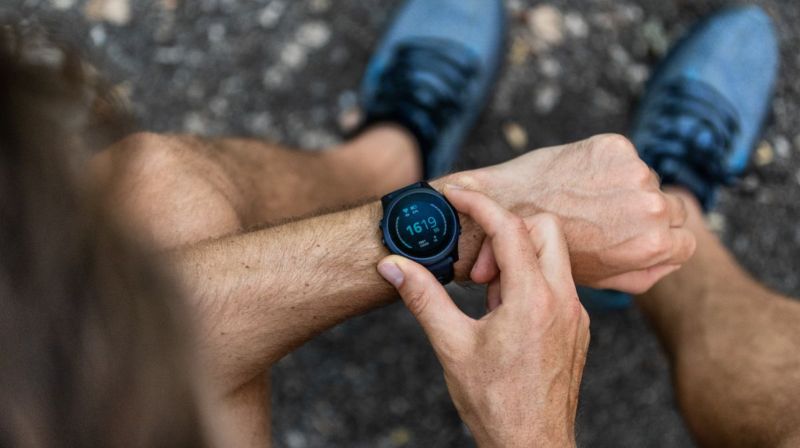
These safe spaces offer fitness for people of color and queer folks, the big-bodied and fat-identified, the low-income and differently abled.

By Deonna Anderson
Freelance digital and radio reporter
Zee Malinalxochitl spent over three years looking for a gym in Oakland, California, where she could feel like she belonged. Working out made her feel empowered, but in many spaces, her identity as a queer Xicana fat femme was questioned.
She had fitness instructors warn her that classes might be difficult. One trainer, she said, was surprised that she could do a burpee.
“I was looking for a place where I could really feel comfortable being a fat person lifting and not having someone assume that I can’t do jumping jacks or that I can’t touch my toes or that I can’t handle lifting 20 pounds,” Malinalxochitl said.
Then a queer-centered gym opened nearby. Named Radically Fit, it offers an inclusive and body-positive space for people who are often marginalized in conventional fitness settings: people of color and folks who are queer or trans, big-bodied and fat-identified, low-income, and differently abled.
Radically Fit’s founder, Lindsey Page, said she has dealt with her own fair share of discrimination from the fitness industry, especially related to body image.
“I wanted to be radical, and I wanted it to be clear that our mission was fitness and the inclusiveness of fitness,” said Page, who has been a personal trainer for over five years.
In her experience working in the fitness industry, she felt like there was no space for the people she hopes to serve at Radically Fit. “People will do what they have to do to work out, and I commend so many folks who just kind of go to gyms and make the best of it,” she said. “But imagine how much more amazing your experience would be if you walked into a space and immediately felt like the space was for you.”
After working as a trainer and fitness director at Bayan Roots, a queer-oriented massage and wellness center, Page bought the fitness program from the company in May. She established the business and rebranded as Radically Fit, operating out of Oakland Strength Factory until she was able to secure another gym space, which opened in July.
It joined a small group of gyms dedicated to people on the margins. For example, there’s Everybody in Los Angeles, whose website says it believes “health and wellness should be accessible, affordable, and adaptive to all people regardless of their gender, race, age, size, or ability.”
And there’s Liberation Barbell in Portland, Oregon. So many queer or trans people are reluctant to work out because “they’re worried they’re going to be harassed, or it’s actually literally not safe,” cofounder Lacy Davis told Portland Monthly in August.
In choosing classes to put on the schedule, Page has been thinking about the intersections of identity and subsets of people within the queer community. Radically Fit recently started offering a mind-body alignment class for gender nonbinary and transgender people.
“The [class] has really been the happiest I have ever felt at a gym because it is tailored to the needs of its members and is specific for trans [and nonbinary people] even within an already niche community,” Carla M. Peña, a Latinx, nonbinary member of Radically Fit, said by email. “It’s been super self-affirming for me.”
The gym, where an unlimited membership plan costs $149 per month, currently offers classes and personal training but no open-gym amenities like weight rooms or sport courts. It also plans to start offering a class in September called Black and Brown Queerz exclusively for people of color.
Radically Fit also offers a sliding-scale program called Community Cares, which allows people to pay what they can, starting with as little as zero dollars. The expenses are covered by a $50 earmark in the gym’s $200 premium membership plan.
“Fitness is expensive, and then you put on top of that that the community we’re serving is oftentimes made up of people who are struggling to get by,” Page said.
For example, a 2016 report showed that transgender Americans were nearly four times as likely to have an annual household income under $10,000 compared to the population as a whole—15 percent to 4 percent. And adding race to the equation, trans people fared even worse, with 34 percent of Black respondents and 28 percent of Latinx respondents reporting extremely low incomes.
The Community Cares program is what allows Peña to be a member. Her partner is in graduate school, so Peña is the only one who works full time. Without a sliding-scale membership, she would have few other options for gyms.
“I thought my only option might end up being Planet Fitness. And that is fine, but when you’re queer/trans/GNC [gender nonconforming], many of us deal with a lot of judgment, stress, and, frankly, issues surrounding safety, for just existing in spaces that are overwhelmingly dominated by cisgender, heterosexual, white bodies,” Peña said in an email.
But at Radically Fit, she doesn’t have to worry about defending her identity every time she has to use the restroom, locker room, or anywhere else.
There, Peña said, “I am free to just be.”
This article was funded in part by a grant from the Surdna Foundation.
Originally published by Yes! Magazine, 09.17.2018, under a Creative Commons Attribution-NonCommercial-NoDerivatives 4.0 International license.







